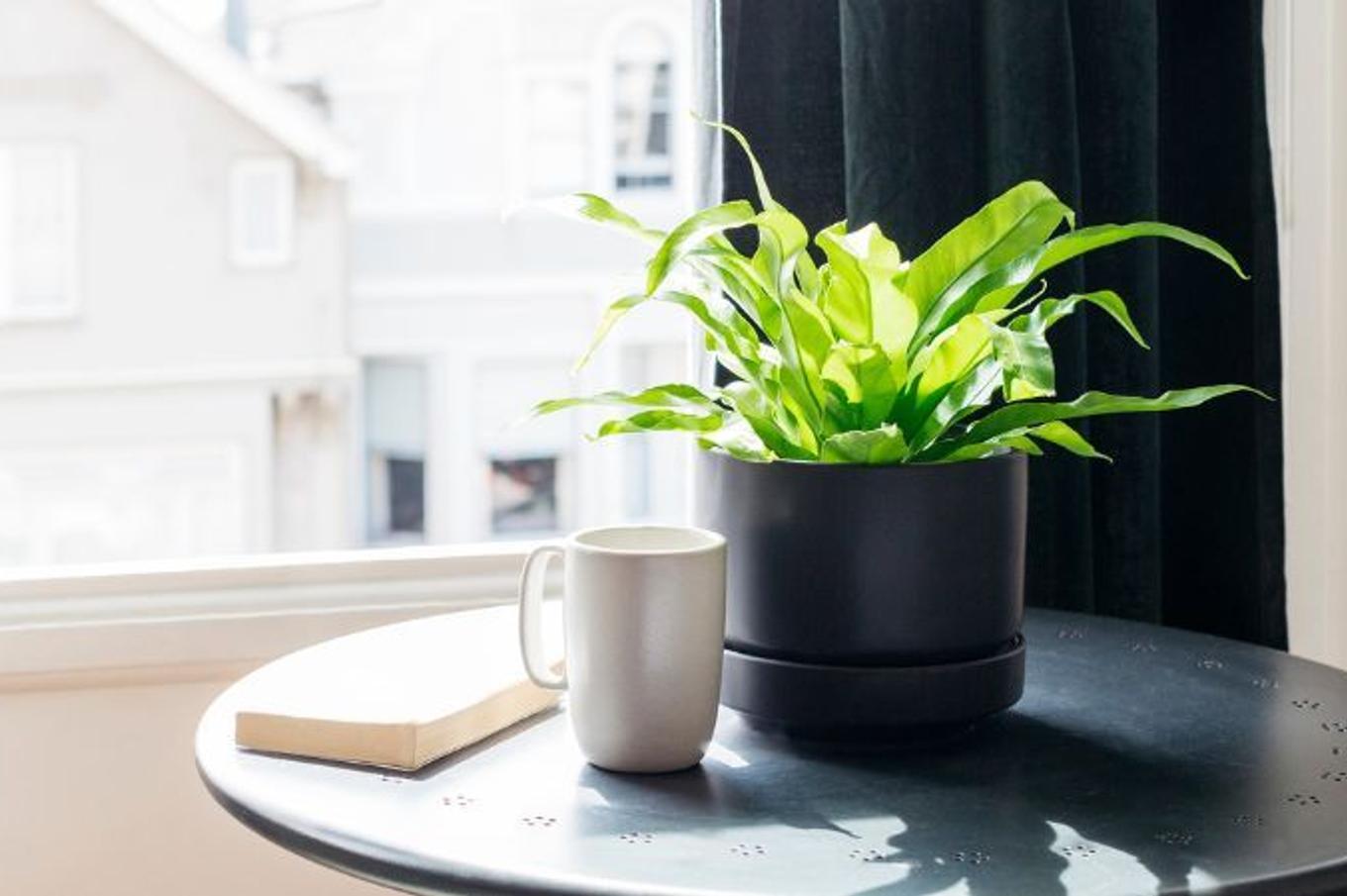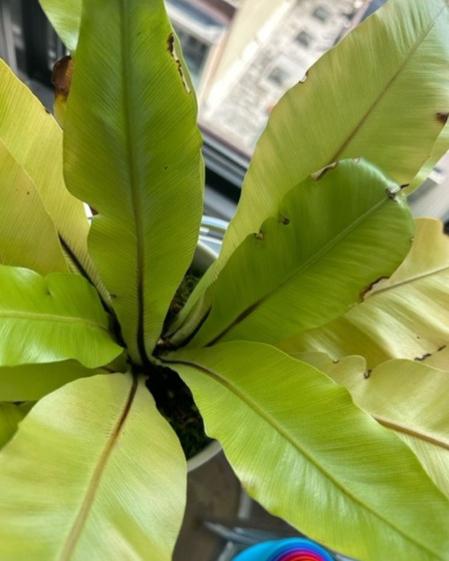Bird's Nest Fern Care Guide

The Bird’s Nest Fern (Asplenium nidus) is a tropical houseplant with a lush, sculptural form that brings a touch of the rainforest into your home. Its bright green, wavy fronds unfurl from a central rosette that resembles—you guessed it—a bird’s nest. This fern thrives in warm, humid conditions and adds fresh, organic texture to any space, especially in bathrooms, kitchens, or cozy corners. With its elegant shape and relatively low-maintenance care needs, the Bird’s Nest Fern is a favorite among houseplant lovers. Read on to learn how to keep this beauty thriving.
Simple Care Instructions for the Bird's Nest Fern
Light Requirements
Bird’s Nest Ferns prefer medium to bright, indirect light, and they can also tolerate lower light conditions, though growth may slow down. Avoid direct sunlight, which can scorch the fronds and cause them to bleach or develop brown patches. These ferns are naturally adapted to dappled forest light, so a spot near an east or north-facing window is ideal.
Watering Needs
Consistency is key when watering a Bird’s Nest Fern. It likes its soil to remain evenly moist but never soggy. Allow the top inch of soil to dry slightly before watering again. Never let the plant sit in standing water, and be careful not to pour water directly into the center of the rosette, as this can cause rot.
With the Bird's Nest Fern, avoid watering in the center of the plant (where the leaves unfurl). Instead, water all around the soil below the leaves.
Typically, watering once a week is sufficient in moderate light and average indoor humidity. In lower light or cooler months, reduce watering frequency. Increase it during warmer seasons or if your home is particularly dry.
Need help timing it right? Use a moisture meter to take the guesswork out of watering.
Humidity and Temperature
Bird’s Nest Ferns love high humidity, making them perfect for steamy bathrooms or kitchens. If your home is dry, especially in winter, increase humidity with a humidifier, pebble tray, or by misting regularly. Without enough moisture in the air, the fronds may develop brown tips or edges.
Keep this tropical plant in a warm spot, ideally between 65–80°F (18–27°C). It is sensitive to cold drafts and temperature drops, so avoid placing it near windows or vents in winter. Exposure to temps below 55°F (13°C) can cause stress or leaf damage.
Soil and Fertilizing
Use a well-draining, peat-based potting mix with good moisture retention. A blend for tropical plants or indoor ferns is ideal. The soil should be loose and airy to help prevent root rot while holding enough moisture for the plant’s needs.
Fertilize your Bird’s Nest Fern every 4–6 weeks during the growing season (spring through early fall) with a diluted liquid fertilizer. Use a gentle, balanced formula and avoid over-fertilizing, which can damage the fronds. Hold off on fertilizing during winter when growth slows.
Common Problems and Troubleshooting Tips
Brown Leaf Tips – Low Humidity or Inconsistent Watering
Symptoms: Tips of fronds turn brown and crispy.
Cause: Dry air or irregular watering routines.
Solution: Boost humidity with a humidifier or daily misting. Make sure you’re watering consistently and keeping the soil evenly moist—not too dry, not soggy.
Fronds Turning Yellow – Overwatering or Poor Drainage
Symptoms: Leaves become pale yellow and may wilt.
Cause: Overwatering or compacted, poorly draining soil.
Solution: Let the top inch of soil dry out before watering again. Ensure the pot has good drainage, and consider repotting in a lighter soil mix if necessary.
Fronds Browning in the Center – Watering into the Crown
Symptoms: Soft, browning leaves near the center of the plant.
Cause: Water sitting in the rosette leads to crown rot.
Solution: Always water the soil directly, avoiding the center of the plant. Tip the pot slightly to direct water to the side if needed.
Wilting or Drooping – Underwatering or Cold Exposure
Symptoms: Fronds look limp or lifeless.
Cause: Dry soil or sudden temperature drops.
Solution: Check the soil—if dry, give it a thorough watering. Move the plant away from drafts or cold windows and maintain warm, stable temps.
Slow Growth or Pale Fronds – Lack of Nutrients or Light
Symptoms: Fronds appear smaller or faded in color.
Cause: Insufficient light or a need for feeding.
Solution: Move the plant to a slightly brighter location (avoid direct sun) and resume monthly fertilizing during the growing season.

This Bird's Nest Fern received too much light.

Potential watering imbalance or too much light.

Most likely underwatered.
Seasonal Care Tips
In spring and summer, your Bird’s Nest Fern will produce fresh, new fronds regularly—especially in warm, humid conditions. Keep it well-watered and feed every 4–6 weeks to support active growth. If fronds become dusty, gently clean them with a damp cloth—never use shine sprays, as they can damage the foliage.
During fall and winter, growth slows. Water less often, skip fertilizer, and increase humidity as indoor air becomes drier. Keep the plant away from cold windows or drafty doors.



